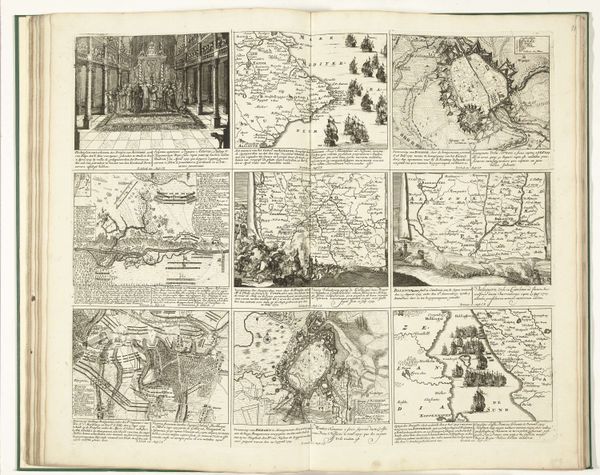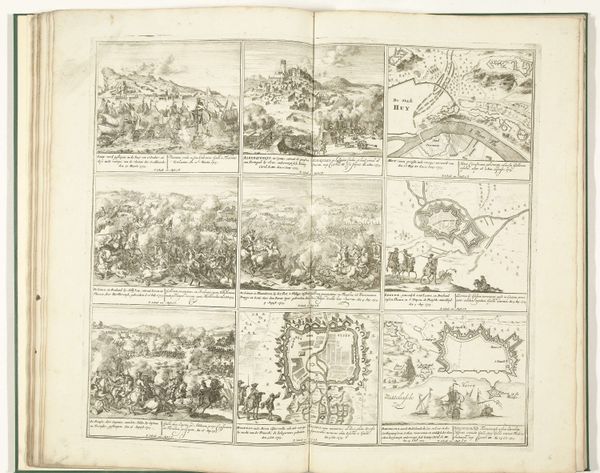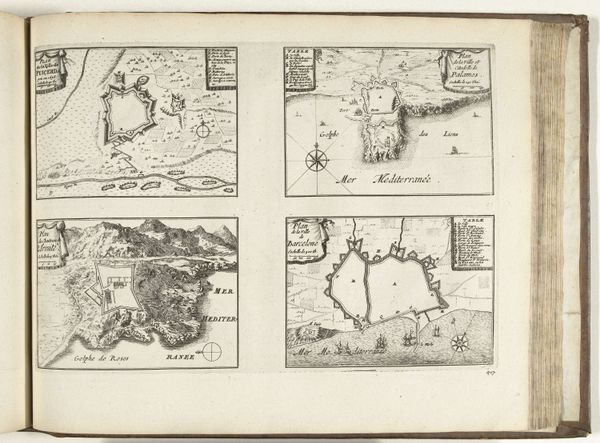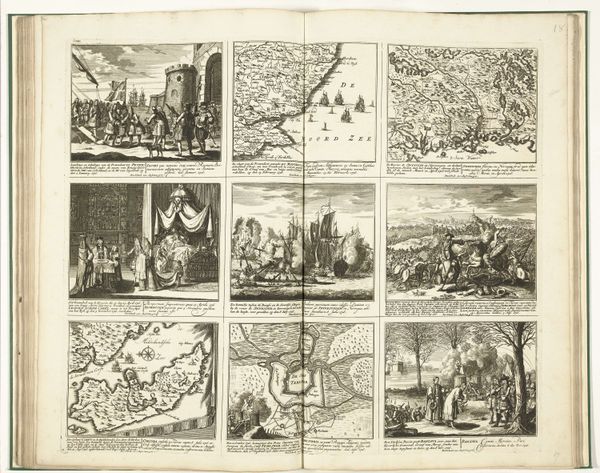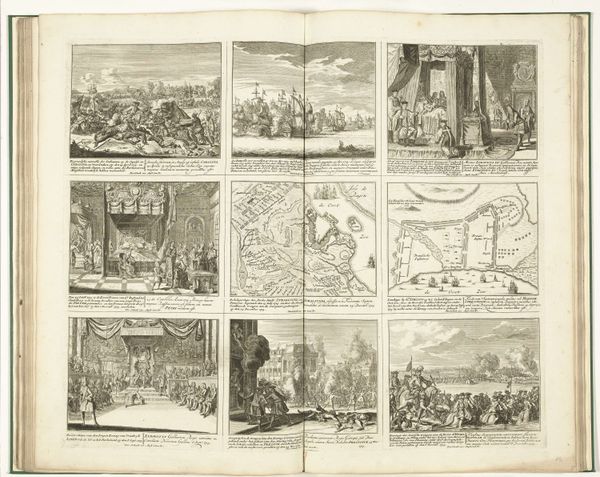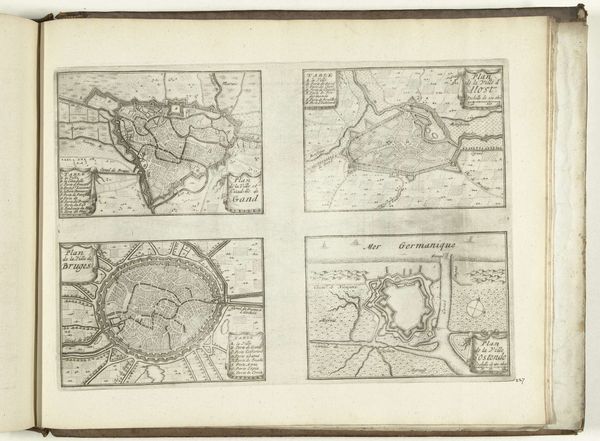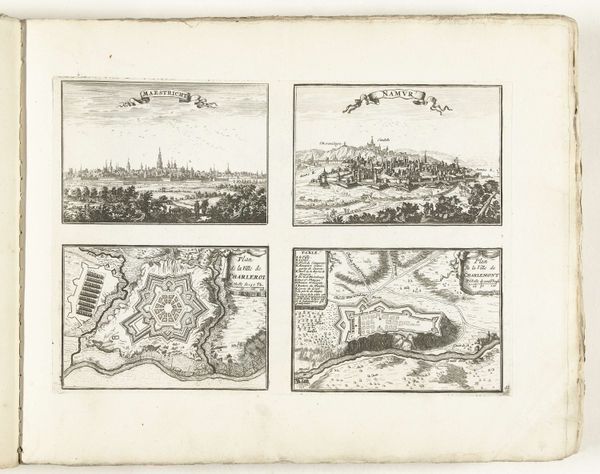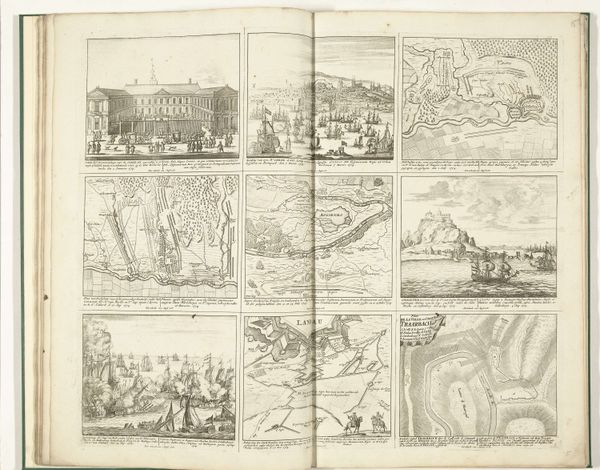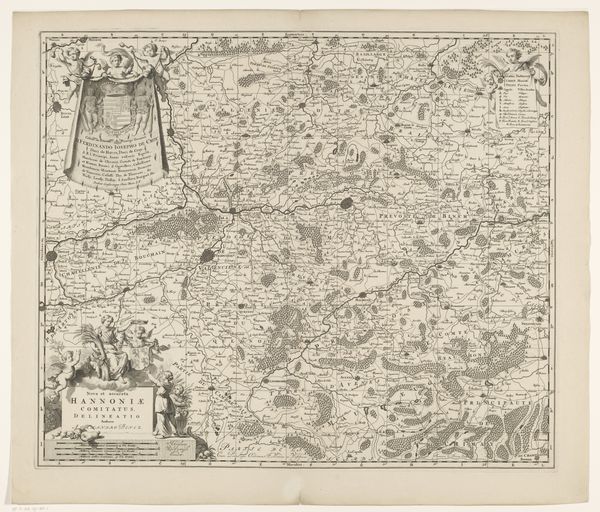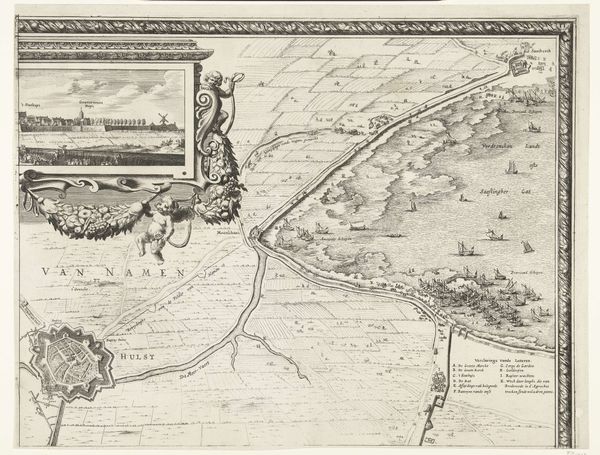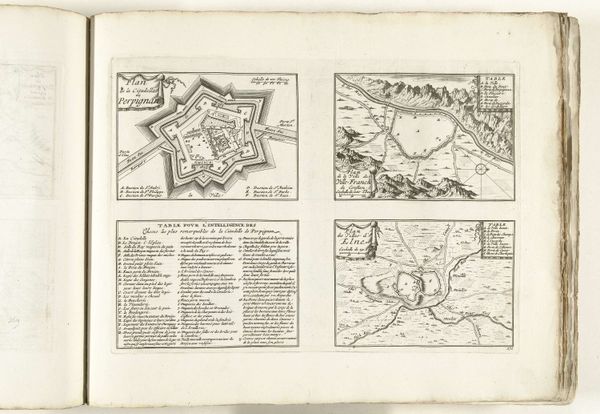
#
mechanical pen drawing
#
pen illustration
#
pen sketch
#
old engraving style
#
personal sketchbook
#
pen-ink sketch
#
pen work
#
sketchbook drawing
#
storyboard and sketchbook work
#
sketchbook art
Dimensions: height 538 mm, width 635 mm
Copyright: Rijks Museum: Open Domain
Curator: This fascinating work is entitled "Schouwburg van den oorlog (blad XI)," which translates to "Theater of War, plate XI." It's attributed to Pieter Schenk, and likely dates from around 1710-1722. It's a mechanical pen drawing currently held in the Rijksmuseum. Editor: It strikes me as a very busy composition, almost like a storyboard or a page from a sketchbook. The neat arrangement of separate, smaller images gives it a highly structured quality, despite the chaotic scenes depicted. Curator: Indeed. Each small illustration within the larger work portrays different battles and siege scenarios. Consider this in light of the political contexts of the period, the ever-present tension and competition between European powers vying for dominance through seemingly endless warfare. Editor: I notice how the precise linework contrasts sharply with the subject matter—maps interspersed with violent battles. The medium itself—pen and ink—lends a certain gravity and starkness to what might otherwise be glorified depictions of war. There's an undeniable level of control in the draughtsmanship that counters the chaos being portrayed. Curator: The images represent various conflicts, reflecting the shifting boundaries and the human cost inherent in such clashes. Think about the accessibility of information at the time. This serves almost as a propagandist device and perhaps the intent was not just documentary, but about controlling narratives and inciting nationalism. Editor: The almost scientific quality of the cartography juxtaposed with scenes of devastation is particularly compelling. The meticulous rendering suggests an aspiration to objectively document conflict, while the vignettes of soldiers, artillery, and ravaged landscapes insert a palpable sense of its brutal reality. Curator: Absolutely. We are not simply looking at geographic locations, we’re seeing a manufactured perspective, deeply informed by the powers that commissioned them. It presents a sanitized yet brutal tableau. This work becomes more than a collection of maps; it transforms into a commentary on power, conflict, and historical interpretation. Editor: Reflecting on the work, I am fascinated how it manages to hold together detailed, technical drafting and emotionally resonant glimpses into the turmoil of war, all held together with an almost austere visual structure. Curator: And I consider the layers of representation embedded in each illustration—maps as representations of territories, battle scenes as representations of historical events, and this entire page a representation of larger sociopolitical currents. It's a rich source for understanding how war was perceived and portrayed in this era.
Comments
No comments
Be the first to comment and join the conversation on the ultimate creative platform.
